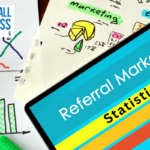SPIN selling, a detail-driven approach to sales presentations and the art of deal or appointment closing, was first popularised following the publication of Neil Rackham’s same-named book in 1988.
Less a script and more a sequence, the SPIN sales method works by prospective clients being asked a series of questions in a certain order by the telesales rep who’s pitching them.
First, there are “Situation” questions, then “Problem” questions, then “Implication” questions, and finally “Need-Payoff” questions.
During the “situation” questions, B2B telemarketing reps first try to understand the prospective client’s current situation in relation to the products or services which they are presenting. The answers given in this stage of the call then determine what happens next.

The “problem” questions are designed to identify what are now commonly referred to as “pain points” – in other words, the negative consequences of the unresolved or overhanging situation the prospective client described during the first part of the call.
This is followed by the “implication” section during which a telemarketing rep will try to introduce an element of urgency into resolving the situation by amplifying the negative commercial or reputational outcomes of the “problems” thus far described. (For a copywriting simile, think of “problem, agitate, solve” approach to sales writing).
And the last part of the call is the “need-payoff” section. If the pitch has been successful to this point, the client now understands fully the need to solve the “implications” of the situation they find themselves in and the job of the rep here is to help them join the dots to the product or service they are selling and/or making appointments for.
For readers of this article who came into the industry from the early 2000’s onwards, you may be familiar with consultative selling which is similar in its approach although not as granular. So, what role does SPIN selling or consultative selling play in today’s telemarketing environment?
John Wallace, president at Apps Incorporated, states that, “(the best ever) book I read on (business development) was “S.P.I.N. Selling” by Neil Rackham…I do a lot of BD, and I use ideas from that book all the time. It’s about as scientific as BD gets.”
Peter Strohkorb, the B2B Sales ‘acceleration specialist’, speaks highly of SPIN but worries that “informed buyers and their online research have disrupted the old Selling Cycle, creating a new purchasing paradigm, to which twenty-first-century sellers must adapt.”
Clare Tweed, sales director at UK direct marketing agency, More Than Words, agrees with Mr. Strohkorb. Ms Tweed stated that, “I first started selling in the late nineties and the influence of the SPIN approach was everywhere and justifiably so.
“The world has changed beyond recognition though since that time. Now, any B2B decision maker can carry out research and perform their own due diligence on the problems they have and they often shortlist the potential solutions before getting in touch with suppliers.
“This makes them, in many cases, more difficult to close because you’re speaking with a person who has done their homework – the knowledge advantage for the rep isn’t as great anymore. However the best counter to that is backing up your marketing and sales approaches with even more detailed information made to fit the customer’s problems.”
The late Joe Girard, an American salesman, motivational speaker, and author who passed away recently, stated that, “I have read pretty much every sales book out there and (SPIN selling) is still one of my top picks… Success in sales meant that you had to actually become part of the process and work with your clients to solve their problems.”
While SPIN selling changed sales into a more consultative process, some question its effectiveness in its original form for today’s much-better-informed business decision makers. However, it seems certain that the basic foundations of this approach will remain as they are but undergo constant adaptation to fit the time.






























